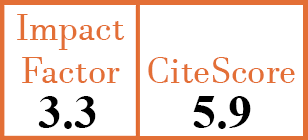Brief Papers
The burden and determinants of fatigue in incident and prevalent systemic sclerosis
J.L. Fairley1, D. Hansen2, S. Proudman3, M. Baron4, J. Sahhar5, G.-S. Ngian6, J. Walker7, L.V. Host8, K. Morrisroe9, W. Stevens10, L. Ross11, M. Nikpour12
- The University of Melbourne, Victoria, and St. Vincent’s Hospital Melbourne, Victoria, Australia. jessica.fairley@svha.org.au
- St. Vincent’s Hospital Melbourne, Victoria, Australia.
- University of Adelaide, South Australia, and Royal Adelaide Hospital, Adelaide, South Australia, Australia.
- Lady Davis Institute for Medical Research, Montreal, and McGill University, Montreal, Canada.
- Monash Health, Melbourne, Victoria, and Monash University, Melbourne, Victoria, Australia.
- Monash Health, Melbourne, Victoria, and Monash University, Melbourne, Victoria, Australia.
- Royal Adelaide Hospital, Adelaide, South Australia, and Flinders University of South Australia, Australia.
- Fiona Stanley Hospital, Murdoch, Western Australia, Australia.
- The University of Melbourne, Victoria, and St. Vincent’s Hospital Melbourne, Victoria, Australia.
- St. Vincent’s Hospital Melbourne, Victoria, Australia.
- The University of Melbourne, Victoria, and St. Vincent’s Hospital Melbourne, Victoria, Australia.
- The University of Sydney School of Public Health, Sydney, New South Wales; Royal Prince Alfred Hospital Sydney, New South Wales; and SydneyMSK Research Flagship Centre, University of Sydney, Sydney, New South Wales, Australia.
CER17645
2024 Vol.42, N°8
PI 1669, PF 1674
Brief Papers
Free to view
(click on article PDF icon to read the article)
PMID: 39152749 [PubMed]
Received: 05/03/2024
Accepted : 24/06/2024
In Press: 14/08/2024
Published: 14/08/2024
Abstract
OBJECTIVES:
To investigate the burden and clinical associations of fatigue in systemic sclerosis (SSc) as measured by FACIT-Fatigue scores.
METHODS:
Australian Scleroderma Cohort Study participants with ≥1 FACIT-Fatigue score were included. Participants were divided into those with incident SSc (≤5 years SSc duration at recruitment and FACIT-Fatigue score recorded within 5 years of disease onset) or prevalent SSc (first FACIT-Fatigue score recorded >5 years after SSc onset). Generalised estimating equations were used to model change in FACIT-Fatigue scores over time, expressed as an increasing (improving) or decreasing (worsening) score.
RESULTS:
Of 859 participants, 215 had incident SSc and 644 prevalent SSc. First-recorded FACIT-Fatigue scores were similar in those with incident (37 units, IQR 25-45.5) and prevalent SSc (36 units, IQR 23-44; p=0.17), as were lowest-ever recorded FACIT-Fatigue scores (incident 23 units; prevalent 22 units, p=0.75). In incident SSc, higher skin scores (regression coefficient (RC) -1.5 units, 95%CI -2.3 to -0.8), PAH (RC -8.2, 95%CI -16.5 to 0.1) and reduced left ventricular function (RC -10.6, 95%CI -18.3 to -2.8) were associated with more severe fatigue. In prevalent SSc, higher skin scores (RC -0.6, 95%CI -1.3 to 0), gastrointestinal symptoms (RC -6.6, 95%CI -9.0 to -4.2), hypoalbuminaemia (RC -2.8, 95%CI -5.0 to -0.7), BMI<18.5kg/m2 (RC -6.3, 95%CI -10.3 to -2.2), raised CRP (RC -3.1, 95%CI -4.7 to -1.5), and anaemia (RC -1.7, 95%CI -3.5 to 0.1) were associated with more severe fatigue.
CONCLUSIONS:
The burden of fatigue is substantial in both incident and prevalent SSc. Cardiopulmonary and gastrointestinal involvement are associated with worse fatigue.



